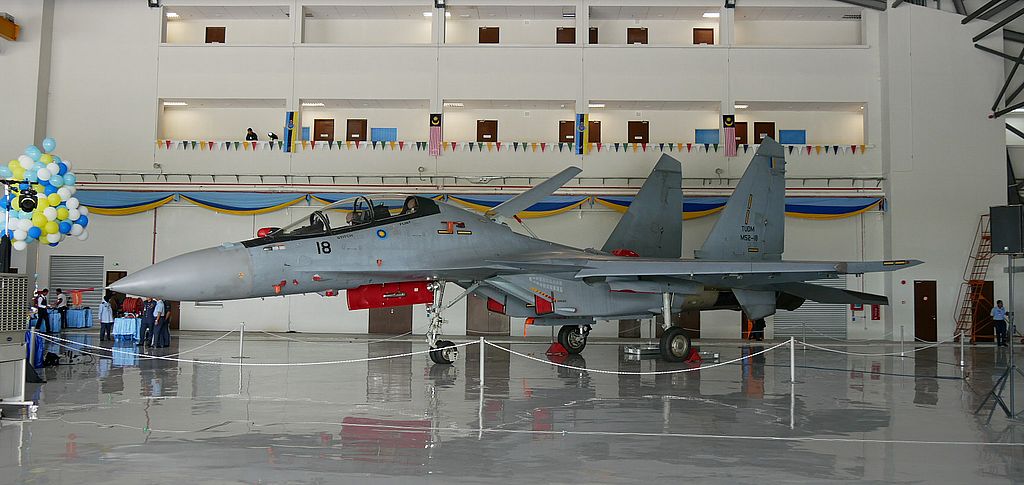
PASIR PUTEH: The Sukhoi technical center at the Gong Kedak air base here was officially inaugurated by
RMAF Chief Jen. Roslan Saad today.
The ceremony was held barely three weeks after an audit report on the project stated that it was delayed as an inexperienced and financially unsound contractor was awarded the contract to build the facility. Read it Here
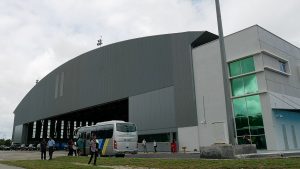
Work on the RM72 million facility started on March 24, 2014 and was certified completed yesterday (Dec 6, 2016) by the Public Works Department. According to the audit report, the original contractor, Syarikat Pembinaan Setia Jaya was replaced 10 months into the project and the work was taken over by a subcontractor, Solar Alert Sdn Bhd.
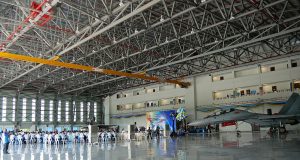
According to Roslan, the new facility – located very close to the aircraft shelters – would provide second line servicing for the Sukhoi fleet of the 11 Skuadron. The work was previously conducted at a hangar next to the flight line which were shared by the squadron and ATSC Sdn Bhd.
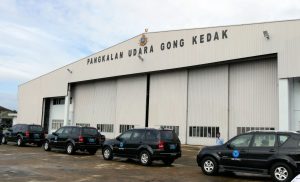
ATSC is a joint venture among National Aerospace & Defence Industries Sdn Bhd (the holding company for Airod Sdn Bhd), Russian Aircraft Corporation, Rosboronexport (Russia state owned arms export company) and the Malaysian Finance Ministry.
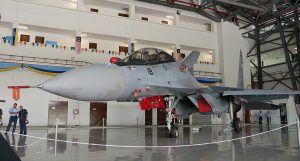
Asked to describe the size of the hangar, Roslan said it was much bigger than the old facility, “we can place up to 10 Sukhois at one time though in practice the number of aircraft requiring maintenance will be much lower than that”.
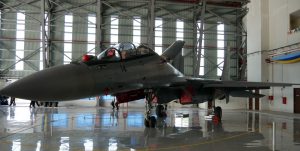
During the ceremony two Flankers were parked inside the carvernous hangar, easily the size of a regular football pitch.
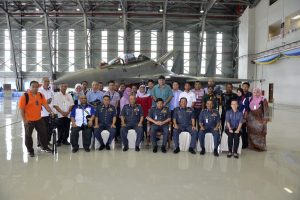
Roslan also said the facility would be used to upgrade the Flankers with new capabilities though he did not mentioned any of it. This was probably the reason the facility is called the Sukhoi technical center. It is not only an MRO shop but also the hub for upgrading the Flankers.
Roslan also announced the upgrading of the Butterworth airbase air traffic control (ATC) radar to overcome obsolescence issues. The one year project will start next month. The project was conducted following the successful upgrade of the Gong Kedak ATC radar by Zetro Aerospace Corporation Sdn Bhd.
–Malaysian Defence
If you like this post, buy me an espresso. Paypal Payment


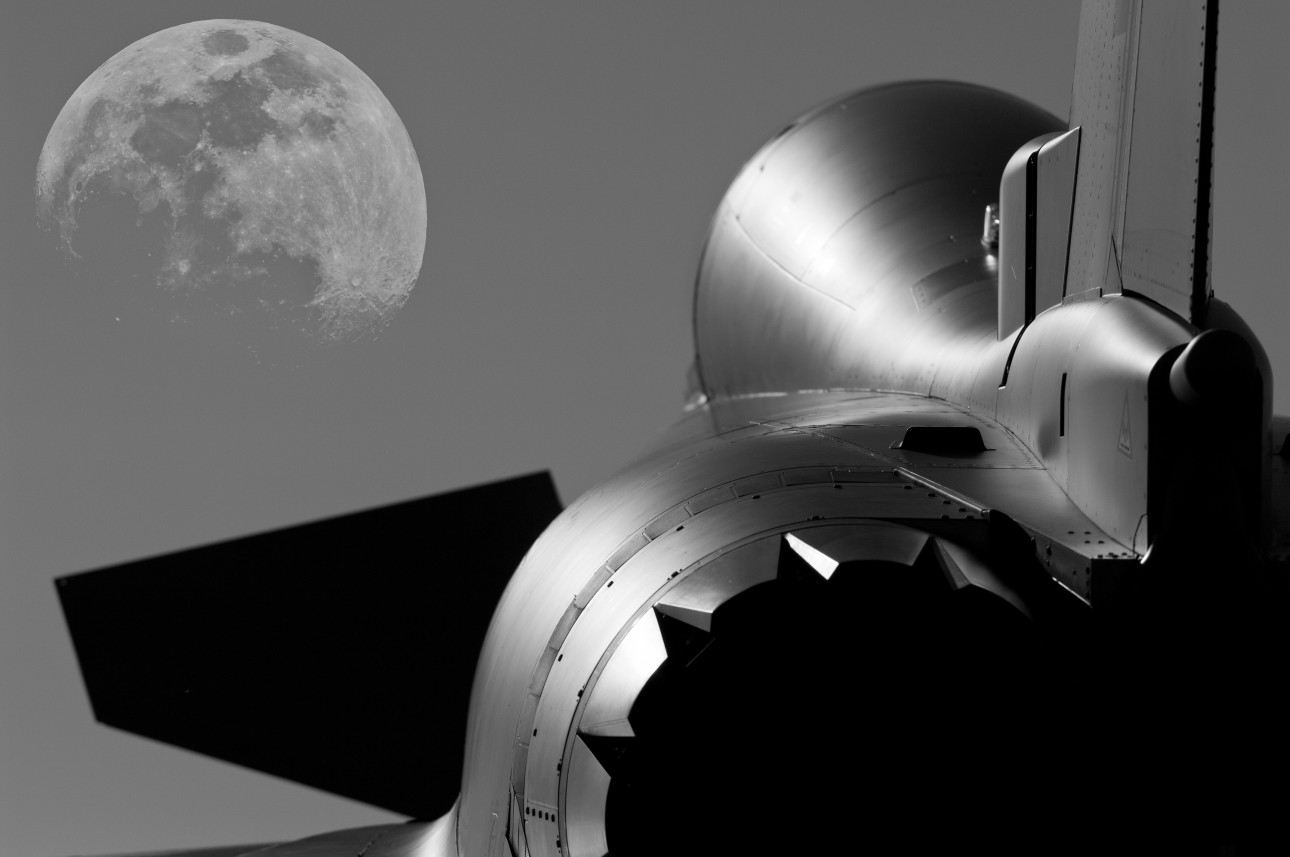

So we’re upgrading our Sukhois?
Reply
Yes, no details yet…
Interesting, I didn’t know that the Russians still have a stake in ATSC. I was under the impression that the Russians [before Rosvooruzhenie became Rosoboronexport] sold their stake.
Reply
I checked with NADI people, they said yes.
Not that I’m complaining but spending 72 million dollars for a glorified workshop that can only cater 1 type of aircraft is pretty senseless imo. We only have 18 aircraft and no follow up order is made
Choon,
Then what about the Scorpenes? We spent millions and millions creating the shore support infrastructure to maintain them and to perform refits. Expensive to do but the right way to go about things.
If we want to ensure the MKMs have a decent operational rate then there’s no way around it : creating a decent depot level maintenance facility.
SU engines, will STC able to repair it or have to send back to Russia?
In the future, another TC will be built, either ETC or DTC. (E-eurofighter, D-dassault)
Reply
Deep maintenance for the engines is only done by the OEM. Even India I believed have to sent them to Russia for such work.
We have to upgrade the MKMs ourselves and build up the infrastructure as it is peculiar to RMAF. If we go to Typhoon or Rafale it will be done by the manufacturer and paid for the original countries, we only need to pay them. It’s like the Hornets, and the Hawks upgrades when we decided to do it.
will the MRCA decided at LIMA next year?
Reply
Unlikely
Get additional MKM if we already have the technical center. for the same amount we yet to spend on 18 thphoon/rafale, we can get 60-70 MKM. with this technical center we can get high operational combat rate. with quite number of MKM we can assign custom role to certain aircraft (eg interceptor) customise probably with more powerful engine
Azrul,
Even assuming we have the cash; the crews and ground support personnel to operate and maintain 60-70MKMs, as well as the personnel to run the squadrons, will not fall from the skies or be gifted from Santa Claus. In short we don’t have the manpower. Other points to consider is we don’t need 60-70 heavyweight twin seaters [a massive overkill] and until the issues regarding the downed MAS plane are settled, we won’t be buying any big ticket Russian gear.
Nimitz,
In the past the IAF had to fly it’s Mil-26s all the way from India to Odessa [where the original OEM was] for engine overhauls. Given the limited number of airframes we have, there is no point in establishing an engine overhaul facility. AIROD and ATSC perform depot level work, e.g. replacing any defective or time expired parts; preventive or routine maintenance on the engine and other vital systems; inspecting the airframe after ‘x’ hours flown, upgrades [if any], etc.
Abit of a side track from the service center. Azlan, how come its a bit over kill to have 50 to 60+ heavy weight (yes , our wet dream ) i know a country, that have 40 and still aquirring Strike Eagle, as i read in airforce monthly, spoke person from the airforce,said prior the initial purchase, a figure of 40 to 50 to be the target.
Im just a common man who is interested in military aviation. Just wanting to know. Sorry for the side track again
zulu,
1. Do we have the cash to buy and operate 60-70 new fighters?
2. Do we need 60-70 fighters given our threat environment? We are not in a state of war or tensions with any of our neighbours.
3. Do we have the needed manpower to operate and maintain 60-70 fighters, plus the hundreds needed to keep squadrons running?
4. Can enough trainee fighter pilots be graduated from FTC 3 every year to ensure we have a steady pool of pilots to replace those who have left the service, been reassigned to other duties or who for whatever reason can’t fly anymore? For that matter, how many LIFTs do we have?
5. Could the cash intended for 60-70 fighters be used instead for other areas that also require funding?
6. Different countries have different threat perceptions, different levels of urgency and different levels of insecurity. One can’t make a direct comparison with what other countries do as the circumstances are different. A particular country – in the 1990’s – looked at banning officers from using handphones because a potential opponent could track people using the handphones and also listen in on the conversations. Surely nobody would suggest that we also do the same?
P.S.
IAF Mil-26s in the past had to fly all the way to ”Rostov” not ”Odessa” for overhauls.
When it comes to the development costs of upgrading the MKM, we are on our own. Notice we are stuck with an outdated targeting pod? Russian pods are not up to date, and to integrate any other pod will incur costs that we must pay fully ourselves because the MKM is unique.
Now I realised the challenges and risks for MKM upgrades. It is clear that OEM can’t offer MKM v2.0, up to ATSC to make its own. Then ATSC need more resources and assume higher risks of failure. The good side is we decide and keep to ourselves what are the new capabilities of MKM v2.0.
A missed opportunity by not going for a SU engine overhaul facility, it too can become a SEA region facility (adding SU Vietnam and Indonesia). I can deduced that is not in OEM’s interest by supporting a full fledged foreign based engine overhaul facility.
Zulu, other country have different doctrine, threat perception, political will and different way of managing resources, that’s why they can afford more jetfighters compared to us.
Reply
RMAF will do the upgrades themselves. How much involvement of ATSC in this is beyond me.
Thank you Azlan and nimitz, as a layman ,i thought, strong airforce can provide support for land and navy. Its all about threat matrix, financial an political will. Thank you again
I don’t know. Like some member said, we can get more Flankers with the money that is used to buy eurofighter typhoon or rafale and we even have existing infra to support them as well. If we spend 2.1 billion dollar for 18 typhoon/rafale, we can get 40 of Flankers, either the Su-30SM or Su-35
Reply
If we buy new Flankers it should be MKMs also, not another variant.
Choon,
Never mind what we can buy : does the RMAF want more MKMs, do we really need much more 2 seater heavyweights and should our new MRCA be based on a platform first designed in the 1970’s or a newer, more modern design incorporating newer technologies that can’t be fitted on follow on MKMs?
AM,
Some of the upgrades can be based on what the IAF is doing; most of it doesn’t have to be specific to the RMAF [an AESA , a full glass cockpit and a new mission computer for example]. Damocles is not ”outdated”, it is however [even when it was launched] not comparable to other Western pods in the market; in terms of resolution and operating altitude, which is why Thales started [a few years ago] on a follow on pod. So perhaps ”inferior” is a more apt description for Damocles rather than ”outdated”. The ability of any pod to transmit imagery on the HUD depends on whether the HUD is holographic or not. Some say the MKM’s HUD is holographic but others say it’s not.
zulu – ” strong airforce can provide support for land and navy.
Yes of course but how ”strong” the air force is is determined by threat perceptions, finance, manpower, etc, etc. Running a large fighter fleet is not cheap and requires adequate and trained manpower.
Nimitz – ” missed opportunity by not going for a SU engine overhaul facility”
Even if the OEM was willing, setting up an engine overhaul facility might not be worth the time and effort in our context. We need a depot level maintenance facility but like many, many others, setting up an engine overhaul facility might not make economic sense. Even AIROD which is a certified C-130H [and other older variants] maintenance and ”stretch” facility does not overhaul T-56s.
Technically we have 57 fighters on the books now, counting the Hawks, so we are close to the “60-70” figure.
Some of the Hawks are pulling advanced training duty. But if we have 60-70 combat coded fighters it might be a reasonable number to account for QRA, training and of course maintenance. Maybe even participation in multilateral exercises.
What Azlan said about QRA a while back gives some sense of proportion.
“A few years ago the Czech air force chief said that meeting NATO commitments by having a 24/7 QRA meant that nearly the whole Gripen fleet (12) was required to support just a pair on QRA duties.”
So Zulu, considering that Singapore has more than a pair on QRA 24×7 and a significant number based overseas it does require a large force in total. Something else is they might have been comfortable with a smaller force if none were based overseas.
I personally don’t have a number to suggest and leave it to the RMAF to develop its requirements.
AM,
I was under the impression that Azrul, when he mentioned the 60-70 figure, meant 60-70 MKMs in addition to what we currently operate.
In addition to the size of the budget, a major problem for us is manpower. At present the total number of active duty pilots we have can probably fit in a large bus and I doubt if adequate numbers of trainee pilots are streamed to fast jets and graduate from FTC 3 annually. Having 60-70 or even 50-60 front line types will certainly make it easier for the RMAF to meet its peacetime operational and training commitments.
Having that kind of numbers will also make it easier having enough air frames to meet unexpected contingencies and participation in foreign exercises, even taking into account that at any one time ‘x’ will be undergoing maintenance or will be grounded for other reasons but there are a lot of fundamental issues that have to be addressed first. Issues that that also be rectified over a certain period, even if the budget was significantly increased overnight.
BTW, in the early mid-1990’s when the Russians were trying to sell us follow on Fulcrums, they did a study on the optimum number of Fulcrums we needed to adequately meet all our needs : they came out with a 60 figure.
Usually only about 60-70% of the fighters are operationally ready. For the flanker fleet it could be assumed that 11-12 aircraft would be operationally ready, while the rest are in 2nd line maintenance or in a major overhaul. Usually 1-2 per year in major overhaul while around 4 is always around in 2nd line maintenance.
From those that are operationally ready, 1-2 should be reserves for any operational matters. So there are actually only about 10 available for taskings.
“At present the total number of active duty pilots we have can probably fit in a large bus”
So where do you think our ratio stands? Taking you literally, if a large bus is 50 then we have fewer pilots than aircraft. “A 1.25:1 pilot-to-cockpit ratio is the accepted norm for sustainment in numerous air forces.”
Fair chance that even if we did expand our training capacity and give FTC 3 everything it needs, we might not find enough prospective pilots in the country who are willing to join and able to pass the requirements.
I might be wrong but we have a good number of young people signing up at commercial flying schools. Question is how many would choose the air force (and stay for long) and how many meet the criteria.
I can’t find the overall percentage of candidates who pass all the stages of flight training, or anything specific to fighters. But what I heard about 20% of trainees admitted to the pre-basic stage will pass it. Which means the % out of all civilians who applied is in the single digits.
“For the flanker fleet it could be assumed that 11-12 aircraft would be operationally ready, while the rest are in 2nd line maintenance or in a major overhaul. Usually 1-2 per year in major overhaul while around 4 is always around in 2nd line maintenance.”
Out of curiosity how many Super Hornets on a carrier can launch if called upon? Since by definition those on a carrier deployment are not in major maintenance or overall.
Currently a carrier air wing consists of 2 super hornet squadron and 2 legacy hornet squadron. In the old days there could be up to 8 squadrons of tomcats, hornets, intruders and corsairs on the carrier.
The super hornet squadron consists of 10 aircraft, of which 8 would be the mission capable aircraft at anybone time in best case scenario. Each squadron would have 17 pilots sharing the aircraft.
All this information are available from published research papers of us military.
AM,
Ok, maybe a large bus and a few more than can fit in a large van :]
I have a sense of numbers based on some info [years ago] and talks with people but I’m not sure how accurate those numbers are at present. At one point we had 2 training intakes a year and at one point it was reduced to 2 [due to the 1997 crisis] but I’m unsure if we have 1 or 2 annually now. In addition to the average number of pilots that are accepted for flight training annually at FTC 1, would be interesting to know the percentage that’s streamed for fast jets and the percentage that actually graduate.
A rough estimate can probably be made on the numbers that Badawi revealed in Parliament years ago. Those numbers were high because he also included ground support personnel. Of course another area that needs to be addressed – on top of financing and manpower – in the event that the fighter fleet is drastically enlarged is the number of LIFTs we have. Ultimately we need a platform that can do the job better than the MBB-339s [which although is a conversion trainer is not a dedicated LIFT] and in numbers. The good news is that the RMAF has been progressively increasing the number of PC-7 Mk2s it has; basic trainers no doubt don’t get people excited but form a very vital element.
My concern is this, if TUDM, is a small force, how could its support, the deployment of astros, armour brigades, naval ships. If the platform is insufficient, how could the airforce provide Offensive/ Defensive counter air, CAS, Barcap etc.
Without air superiority, the land and naval forces would be cherry pick by the foes
AM,
The number of aircraft a carrier can spot at any given time depends on various factors. A high temp can be achieved but over a prolonged period it will decrease. If we look at carrier ops mounted over , Bosnia, Kosovo, Iraq and Afghanistan the numbers of carrier plane launched were not large but I suppose it was due to operational requirements – large packages may not have been needed. If the Cold War had become ”hot” I’m suppose USN carriers would have launched larger strike packages. Interestingly, the first to operate carriers in groups and large aircraft strike packages were the Japanese; at a time when the U.S. and everybody else operated carriers singly or at the most in pairs.
zulu – ”Without air superiority, the land and naval forces would be cherry pick by the foes”
Nobody here said otherwise and you can rest assured the RMAF realises the importance of having adequate numbers of MRCAs. The main problem is that in addition to not having the cash and manpower to operate a large fighter fleet; what is the likelihood of us being involved in a state on state conflict requiring a large MRCA fleet to perform sustained ops? What kind of threats are we likely to face in the near future?
Granted we do need a minimum number of airframes to meet operational commitments and to have a minimum deterrent capability but for every justifiable reason given why we should have more MRCAs; others can make equally justifiable reasons why we also need more ships, UAS, MPAs, etc, etc. As such a compromise has to be reached based on spending power and the threat environment.
Is it possible to get more MKM or Su-30s for Malaysia’s Air Force?
If you mean about 70 pilots, I assume you’re referring to fighters only right? Otherwise we are well and truly…
Sam,
That question has been asked a thousand times. Depends if we have the cash and if we have a need for additional MKMs. Before one buys something one has to have a requirement for it. No doubt, we have a requirement for new MRCAs but whether we actually have a requirement for follow on MKMs is a different matter. Also as has been pointed out here by various people; until the circumstances behind the downing of the MAS plane has been resolved there is little chance of ordering any big ticket ”Made in Russia” gear.
Right now I only hope to see the MKM networking project. It won’t solve most of the MKM’s problems, but it’s better than having the MKMs as they are now.
Hai salam semua anak cucu pemikiran kamu semua memang betul.pandangan saya begini,maĺaysia ada lah kedudukan yg unik terletak di timur dan barat,tidak ada niat untuk menyerang mana mana negara dan kita harap tidak ada negara yg hendak menyerang,kita harap jangan tertipu dg war drum yg di main kan oleh pengeluar sejata untuk mengadudumbak kita dg jiran,apa yg saya sebut di atas malaysia ada di timur dan barat dan mudah untuk mengurus kan senjata yg di perlu kan di timur dan barat itu apa?,perlu kah banyak jet pejuang di mana tidak dapat di terbang kan kerana no fly zone,dari itu kita memerlukan air defance system yg banyak dan tercanggih dari beberapa negara, bukan negara besar kawasan ini,kita tahu ancaman itu datang dari mana kalau ada,kita bukan negara yg hendak menyerang hanya untuk mempertahan dan kita kan air defance sys untuk pertahan dan menyerang yg boleh memusnah kan, perbelanjaan pun jauh lebih murah apa lagi kalau kita buat sendiri.
Reply
No fly zone mana? Senjata buatan sendiri lagi mahal sebenarnya
Air defence system is cheaper to maintain but MRCA is more efficient.
Sekarang belum lagi tetapi maksud saya ada dua sama ada secara resmi atau tidak resmi atau paksa,kita tidak boleh segala kemunkinan,kita misti melihat 5 tahun 10 tahun atau 15 tahun kehadapan,kita mesti berfikeran terbuka dan waspada dan sedikit curiga,dalam banyak perkara yg saya sebut hanya itu kah yg nampak?MAKSUD saya sebelum mampu membeli kapal terbang atau jenis apa,kita beli dahulu missel air defance yg kita mampu dahulu sebab kalau ada yg hendak cuba cuba meraka akan fikir 2 kali,maksud saya membuat itu bukan lah kapal terbang hanya senjata yg kita mampu membuat nya terutama sekali senjata missel defance system,dan boleh di guna kan di darat ,laut dan udara harap jangan fikir mengalah.
Maksud saya sebelum termampu untuk membeli mrca, kita tambah senjata yg canggih supaya pertahanan kita tidak terlalu lopong itu maksud saya dan juga MRCA itu untuk intersep dg cepat bukan untuk menyerang negara lain dan lagi sukoi 30 dan hornet cukup mampu untuk pertahanan, sementara untuk medapat kan MRCA lain kita boleh guna kan sebagai intersep dg mengurang kan senjata yg berat supaya ia cepat terbang naik,kemudian baru lah kapal terbang yg lain menyusur dari belakang dg senjata yg penuh,sebenar nya kita ni tukar tukar fikiran sahaja bukan menunjuk siapa yg lebih tahu.
nawab,
Ground air defence systems can’t do the job of a fighter and vice versa; both are intended to complement each other. None is more ”efficient” as both operate together. Even if one had a comprehensive AD network, comprising hundreds of alerting devices and missiles one still needs fighters. Without fighters an opponent can gradually take down one’s AD network, as seen in Iraq and Kosovo. About being cheaper, I’m not sure sure. When you add in all the primary radars, gap fillers and other stuff needed, including networking them and having SAMs and Triple A, plus the need to progressively upgrade.update them; it’s not cheap.
Sebenarnya saya ni bekas tentera jadi amat berminat,saya akan menceritakan satu hal bagaimana ahli politik dan pegawai atasan melihat kita dalam satu keperluan sebagai cuntoh untok di faham kita memerlukan 6 kendraan untok menyelesai masalah kita cuma ada 5 kendraan jadi mereka menghantar 2 orang berkelulusan phd.kami mengambil masa 2 hari untuk selesai kan masalah sekecil itu,akhir nya keputusan yg di beri 5 kendraan itu sudah mencukupi malah kita hanya memerlu kan 4 1/4% kendraan bermakna keperluan kita sudah terlebih ,jadi cara itu mereka melihat permintaan kita,jadi masaalah kita balik keasal tidak dapat diselesaikan jadi apa perlu dibuat kita hanya pusing balik tapak tangan kita itu lah yg saya buat,lepas 2 minggu dapat berita di tambah 1 kendraan lagi,kita hanya balik kan masalah itu pada mereka balik.keperluan dan permintaan harus terus di buat dan biar mereka buat keputusan.Ini cerita benar yg saya nak tunjul kan ialah pemikiran orang orang yg ada PHD.
4 bkn 5 ke including amerchi
Reply
Huh?
Will Malaysian’s Air Force able to purchase more Su-30?
Reply
Able financialy, no, willing, no also.